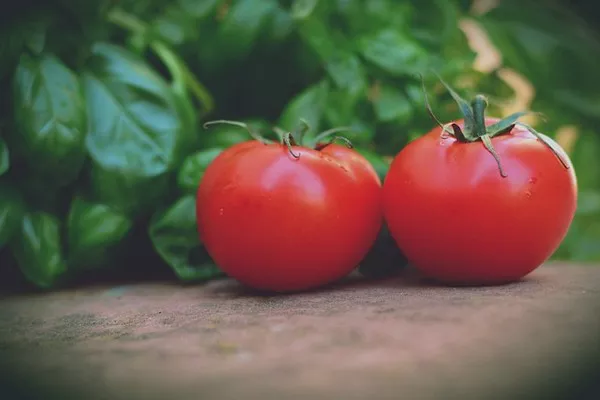Tomatoes, with their vibrant colors and versatile culinary uses, are a staple in many cuisines worldwide. However, behind the scenes of every juicy tomato lies a fascinating process crucial for their growth and development: pollination. Understanding how tomato plants pollinate is not only essential for gardeners and farmers but also for anyone interested in the intricate workings of nature’s reproductive mechanisms. In this article, we delve into the world of tomato plant pollination, exploring its mechanisms, factors influencing it, and its significance in ensuring bountiful harvests.
The Basics of Tomato Plant Reproduction
Tomato plants, like many flowering plants, rely on pollination for reproduction. Pollination is the transfer of pollen grains from the male reproductive organs (anthers) to the female reproductive organs (stigma) of the same or compatible flower. In the case of tomatoes, each flower possesses both male and female parts, making them self-pollinating. However, external factors such as wind, insects, or human intervention can facilitate the transfer of pollen, leading to increased efficiency and fruit set.
Types of Pollination in Tomato Plants
1. Self-Pollination: Tomato plants have perfect flowers, meaning each flower contains both male and female reproductive organs. In ideal conditions, the pollen from the anthers falls directly onto the stigma within the same flower, leading to self-pollination. This process is efficient but may result in limited genetic diversity.
2. Cross-Pollination: While tomatoes are primarily self-pollinating, cross-pollination can occur when pollen is transferred between flowers of different plants. This typically happens through external agents such as wind or insects. Cross-pollination can introduce genetic diversity, potentially leading to improved traits in the offspring.
Factors Influencing Tomato Plant Pollination
Several factors influence the pollination process in tomato plants, affecting the quantity and quality of fruit produced:
1. Weather Conditions: Temperature, humidity, and wind speed play crucial roles in pollination. Warm, dry weather with mild breezes is optimal for pollen dispersal and stigma receptivity. Extreme temperatures or heavy rainfall can inhibit pollination by affecting pollen viability and flower structure.
2. Presence of Pollinators: Insects such as bees, bumblebees, and butterflies are effective pollinators for tomato plants. Their buzzing activity helps dislodge pollen grains from the anthers and transfer them to other flowers. Adequate habitat and absence of pesticides are essential for attracting and maintaining pollinator populations.
3. Cultural Practices: Proper spacing, pruning, and trellising of tomato plants can enhance air circulation around the flowers, facilitating pollen movement. Additionally, removing weeds and providing adequate nutrients through fertilization promote healthy flower development and pollen production.
4. Genetic Factors: Some tomato varieties exhibit traits that promote or inhibit cross-pollination. Open-pollinated varieties tend to be more genetically diverse and adaptable to various environmental conditions, whereas hybrids may require specific pollination management techniques to maintain desired traits.
Pollination Techniques for Tomato Plants
While tomato plants are capable of self-pollination, certain techniques can improve pollination efficiency and fruit set, especially in greenhouse or controlled environments:
1. Hand Pollination: In situations where natural pollination is insufficient, hand pollination can ensure fruit production. This method involves transferring pollen from the anthers of one flower to the stigma of another using a small brush or cotton swab. Hand pollination is commonly practiced in greenhouses to maximize yield and uniformity.
2. Mechanical Agitation: Gentle shaking of tomato plant stems or using oscillating fans can mimic the buzzing activity of pollinating insects, aiding in pollen dispersal within the flower clusters. This technique is particularly useful in enclosed spaces where natural airflow is limited.
3. Introducing Pollinators: In outdoor settings, attracting and supporting populations of pollinating insects can boost pollination rates. Planting flowering companion plants, providing nesting sites, and avoiding chemical pesticides are effective strategies for promoting pollinator diversity and abundance.
Significance of Pollination in Tomato Production
Pollination plays a pivotal role in ensuring the productivity and sustainability of tomato crops. Here’s why it matters:
1. Yield and Quality: Proper pollination directly impacts fruit set, size, and uniformity. Well-pollinated tomato plants produce higher yields of quality fruits with fewer deformities or blemishes, thereby enhancing marketability and consumer satisfaction.
2. Genetic Diversity: Cross-pollination introduces genetic variability, which is essential for breeding programs aimed at developing new tomato varieties with improved traits such as disease resistance, flavor, and shelf life. Maintaining diverse pollinator populations contributes to the resilience of tomato ecosystems.
3. Ecological Balance: Tomatoes, like many flowering plants, provide food and habitat for pollinators, forming vital components of ecosystems. By supporting pollinator populations, tomato cultivation contributes to biodiversity conservation and ecosystem stability.
Conclusion
The pollination process of tomato plants is a complex yet fundamental aspect of their reproductive biology. Whether through self-pollination or cross-pollination facilitated by external agents, successful pollination is essential for fruit development and crop yield. By understanding the factors influencing pollination and implementing appropriate techniques, growers can optimize tomato production while promoting environmental sustainability and biodiversity conservation. As we continue to explore and appreciate the intricate interactions between plants and pollinators, we ensure the continued abundance of this beloved culinary staple for generations to come.


